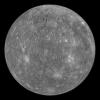 Celestial transits-where a celestial body is seen to pass across the solar disk from the perspective of the Earth-are relatively rare events. The planet Mercury undergoes around 13 transits a century, and Venus has a pair of transits approximately every 120 years. In 2012 the SWAP EUV imager on the PROBA2 satellite successfully observed a Venus transit of the Sun. On May 9, 2016, it was Mercury's turn! The Mercury transit was seen from Earth starting at 11:13 UT and ending at 18:42 UT. The total transit time was around 7 hours and 30 minutes.
Celestial transits-where a celestial body is seen to pass across the solar disk from the perspective of the Earth-are relatively rare events. The planet Mercury undergoes around 13 transits a century, and Venus has a pair of transits approximately every 120 years. In 2012 the SWAP EUV imager on the PROBA2 satellite successfully observed a Venus transit of the Sun. On May 9, 2016, it was Mercury's turn! The Mercury transit was seen from Earth starting at 11:13 UT and ending at 18:42 UT. The total transit time was around 7 hours and 30 minutes.
What did we expect to see in SWAP observations? SWAP is an EUV telescope onboard the ESA PROBA2 satelite, it observes the Sun at roughly 1 million degrees from orbit around the Earth. Mercury is expected to be pictured as a small black disk crossing the face of the Sun, which would be seen as roughly 4 pixels in diameter. The PROBA2 team created a simulation of what SWAP was expected to see, which is shown in the video below. This simulation illustrates the path of Mercury as it crosses the Sun from the perspective of SWAP on PROBA2. The path of Mercury appears to 'wobble' as it crosses the Sun, but this is an artificial effect created by parallax from the changing perspective of Mercury in the PROBA2 field-of-view as the spacecraft orbits the Earth.